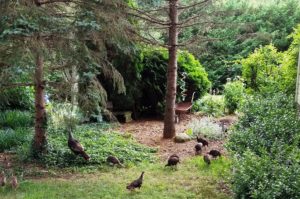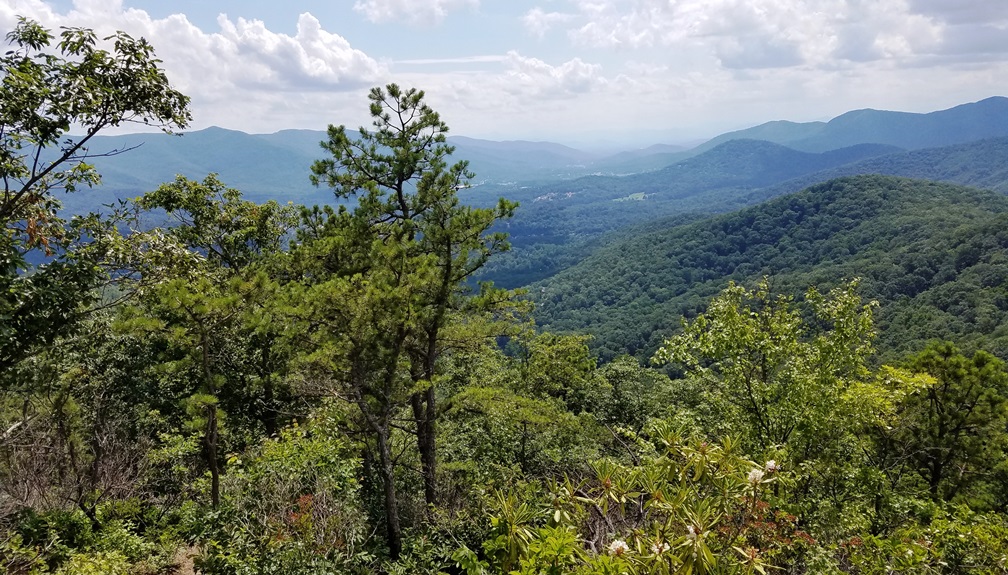The Blue Ridge Parkway was the first national rural parkway to be conceived, designed, and constructed for a leisure-type driving experience. Its varied topography and numerous vista points offer easy public access to spectacular views of central and southern Appalachian rural landscapes and forested mountains. It connects Shenandoah National Park in Virginia with Great Smoky Mountains National Park in North Carolina.
But imagine not getting a haircut for 80 years. That’s how the Blue Ridge Parkway is looking in some spots these days: a little hairy and ragged around the edges.
In the first major project of its kind since the parkway was constructed in the 1930s, a team of parkway resource managers and skilled arborists are working around Haywood and Jackson counties of North Carolina to give some much-needed shearing to overgrown vistas.

Wild turkeys in yard near Blue Ridge Parkway.
Photo credit: Storm Cunningham.
The goal of the Renew the Views project is to balance the original, scenic design intent of the parkway and the National Park Service mission to protect its natural resources, said parkway landscape architect David Anderson.
REVITALIZATION readers are used to reading inspiring stories of reforestation. Tree cutting? Not so much. But sometimes it’s necessary, even in protected areas like national parks. In this case, the goal is restoring the ability of park visitors to enjoy nature’s beauty, which—in turn—revitalizes the park’s ability to perform its mission.
The Blue Ridge Parkway brings $980 million dollars to the adjacent communities annually. It is a primary catalyst for promoting regional travel and tourism, serving as a unifying element for 29 counties through which it passes, engendering a shared regional identity, providing a common link of interest, and being a major contributor to regional economic vitality.individuals and adjacent communities.
The designers of the Blue Ridge Parkway created 216 overlooks to offer astonishing views of rippling mountain peaks, valleys, and more. Over time, vegetation has grown and obscured many of the original vistas. Working with the National Park Service, the Blue Ridge Parkway Foundation is clearing these overlooks with the support of individuals and adjacent communities.
As an example of pre- and post-World War II automotive rural parkway design, the Blue Ridge Parkway retains the greatest degree of integrity of any parkway in the United States. The Parkway is recognized around the world as an international example of landscape and engineering design achievements with a roadway that lies easily on the land and blends into the landscape.
The Parkway is the highest and longest continuous route in the Appalachian area. Along its 469-mile length, it provides scenic access to crests and ridges of five major ranges within the central and southern Appalachian Mountains, encompassing geographic and vegetative zones that range from 649 feet at James River in Virginia to 6,047 feet at Richland Balsam in North Carolina.
In April of 2018, the Blue Ridge Parkway Foundation announced that many of the views on the southern end of the Blue Ridge Parkway are once again long-range vistas. The Parkway’s Arborist Incident Response Team removed trees and vegetation that were obstructing the long-range views at overlooks from milepost 420 to 435. The 10-day project was planned to avoid disruption of wildlife.
But they aren’t done yet: another clearing is scheduled for the Fall of 2018.
Featured photo of Blue Ridge Parkway vista in North Carolina by Storm Cunningham.
See the Renew the Views website, where you can also donate to the cause.

